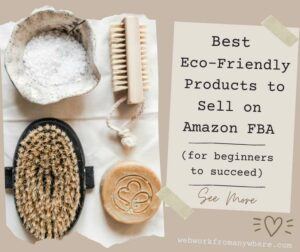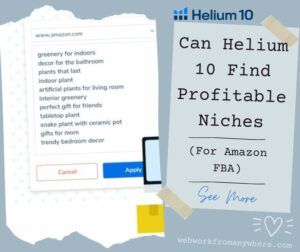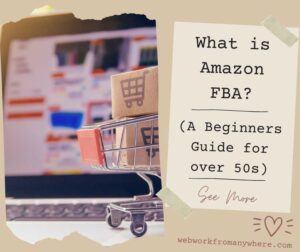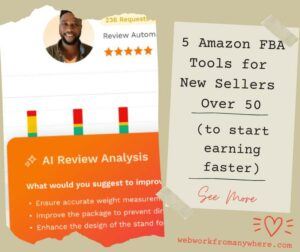Yes, Helium 10 can find profitable niches and keywords. It simplifies complex Amazon research into clear data, plus you can find hidden opportunities that your competitors miss. Here are 8 Helium 10 tools to accelerate your success and profit with Amazon FBA….
- What is Helium 10?
- 1. Black Box: Discover Profitable Niches
- 2. Cerebro: Reverse Engineer Your Competition
- 3. Magnet: Generate Fresh Keyword Ideas
- SEE VIDEO: Amazon Keyword Research Masterclass
- 4. Xray: Analyze Market Opportunity Instantly
- 5. Frankenstein: Process Keywords Like a Pro
- Video: How to Use Frankenstein to Optimize Keywords
- 6. Scribbles: Optimize Your Listings Perfectly
- 7. Adtomic: Automate Your Amazon Advertising
- 8. Profits: Track Your Success Metrics
- To Do: Your Helium 10 Niche Research Workflow
- Summing Up Helium 10 Tools
- Wrapping Up – Can Helium 10 Find Profitable Niches?
This post contains affiliate links. If you click on them and buy something, I might get a small commission. Thanks for supporting my work!
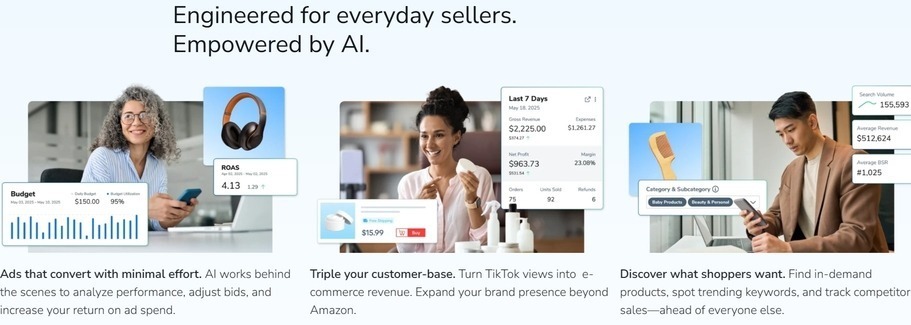
What is Helium 10?
Welcome to the Amazon FBA Series. Are you thinking about selling on Amazon but not sure where to start? Helium 10 is a powerful software suite that helps you find profitable products, optimize your listings, and grow your business with confidence. It’s packed with smart tools – and the best part? Helium 10 offers loads of beginner-friendly training so you can learn quickly and making confident decisions from day one.
1. Black Box: Discover Profitable Niches
Helium 10’s Black Box acts as your personal product hunting assistant. You set specific criteria like monthly revenue targets and competition levels.
The tool scans millions of Amazon products instantly. You’ll discover profitable niches you never knew existed.
Here’s How you Use Black Box
Set your minimum monthly revenue to $10,000. Choose products with fewer than 150 reviews. Select categories you understand well.
Black Box reveals products meeting your exact specifications.
Action Tip
Start with familiar categories like home and garden or kitchen tools.
Example: Search for “silicone kitchen tools under $25” with 50-150 reviews. You might discover silicone jar openers generating $15,000 monthly with low competition.
Definition
Revenue: Total monthly sales income generated by a product on Amazon.

2. Cerebro: Reverse Engineer Your Competition
Cerebro unlocks your competitors’ keyword secrets in minutes. You simply enter any product’s ASIN code.
The tool reveals every keyword driving their sales. You’ll see exactly what’s working in your chosen niche.
Here’s your Cerebro Strategy
Find a successful product in your target niche. Copy its ASIN from the Amazon URL. Paste it into Cerebro and hit search.
You’ll see hundreds of profitable keywords instantly.
Action Tip
Focus on keywords with 1,000-10,000 monthly searches and low CPR (Cerebro Product Rank) or Title Density. These sweet spots offer the best opportunities for newcomers.
Example: A competitor’s yoga mat might rank for “eco-friendly yoga mat,” “non-slip exercise mat,” and “premium meditation mat.” You can target these same profitable keywords.
Definitions
ASIN (Amazon Standard Identification Number): A unique 10-character code Amazon assigns to every product in its catalog.
Cerebro Product Rank – this is the estimated number of sales needed to rank on page 1.
Title Density – this is how many top-ranking listings use the keyword in their title.
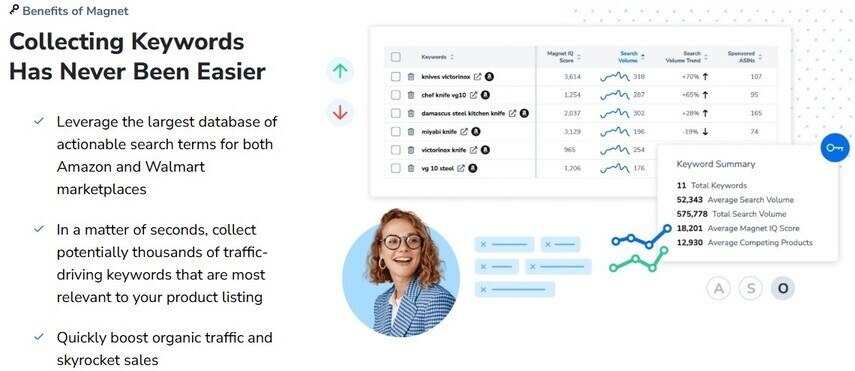
3. Magnet: Generate Fresh Keyword Ideas
Magnet expands your keyword universe beyond obvious choices. You enter one seed keyword and discover hundreds of related terms.
This tool prevents you from missing profitable long-tail keywords. Your research becomes comprehensive and thorough with this custom filtering.
Your Magnet Process
Type your main product keyword into Magnet. Set a minimum search volume based on your niche – 500 is a good starting point, but don’t ignore lower-volume gems., e.g. 100-300.
Review the generated list for unexpected finds. You’ll find keywords your competition overlooks.
Action Tip
Look for keywords with buyer intent like “best,” “buy,” “reviews,” or “compare.” These Amazon searchers are ready to purchase (not just browsing).
Example: Enter “coffee grinder” and discover “quiet coffee grinder for apartments” or “coffee grinder for French press.” These specific terms often have less competition.
Definitions
Search Volume: Number of times a keyword is searched monthly on Amazon.
Seed Keywords: Basic keywords you start with to generate related keyword ideas.
Long-tail Keywords: Specific, multi-word phrases with lower competition and high buyer intent.
SEE VIDEO: Amazon Keyword Research Masterclass
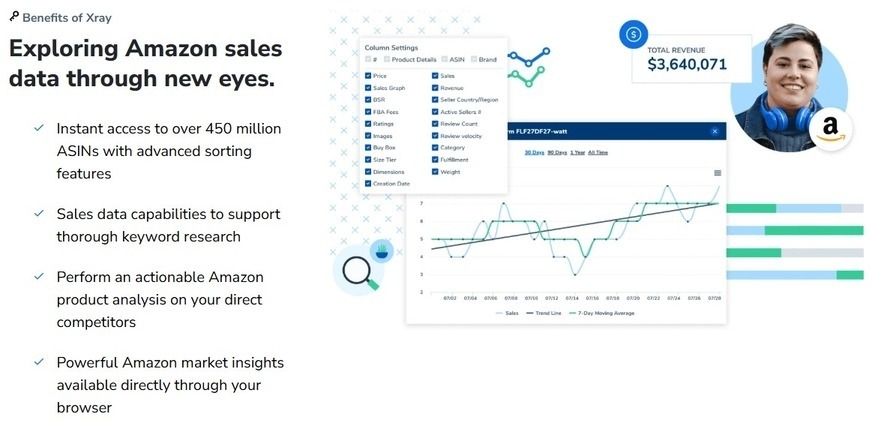
4. Xray: Analyze Market Opportunity Instantly
Xray transforms any Amazon search results page into actionable data. You see monthly sales estimates, revenue projections, and competition analysis.
This browser extension works while you browse Amazon normally. You make informed decisions without switching between tools.
How to Leverage Xray
Search for products in your chosen niche on Amazon. Click the Xray button in your browser.
Review the data for each product listing. You’ll spot market gaps and opportunities immediately.
Action Tip
Look for markets where top products have fewer than 100 reviews but generate over $5,000 monthly. These indicate strong demand with manageable competition.
Example: Searching “bamboo cutting boards” reveals which sizes, styles, and price points generate the most revenue. You can enter with a differentiated product.


5. Frankenstein: Process Keywords Like a Pro
Frankenstein organizes your keyword research into clean, usable lists. You upload messy keyword data from multiple sources.
The tool removes duplicates, sorts by relevance, and creates targeted campaigns. Your keyword management becomes effortless and systematic.
Your Frankenstein Workflow
Export keywords from Cerebro and Magnet. Upload both files to Frankenstein simultaneously. Choose your processing options like removing duplicates. Download your clean, organized keyword list.
Action Tip
Group related keywords into themed campaigns. Create separate lists for different product variations or customer segments.
Example: Separate “stainless steel water bottle” keywords from “insulated water bottle” keywords. Each group needs different marketing messages.
Video: How to Use Frankenstein to Optimize Keywords

6. Scribbles: Optimize Your Listings Perfectly
Scribbles ensures you use every valuable keyword in your product listing. You input your researched keywords and current listing.
The tool highlights which keywords you’ve included and missed. Your optimization becomes complete and strategic.
Your Scribbles Process
Copy your product title, bullets, and description into Scribbles. Add your researched keyword list from previous tools.
Review the analysis to see unused keywords. Update your listing to include missing terms.
Action Tip
Focus on including high-volume keywords in your title and bullet points. These positions carry the most SEO weight.
But don’t neglect the meta keywords you enter in the backend of your Amazon Seller Central Listing – they help with discoverability.
Example: If you missed “BPA-free water bottle” in your listing, Scribbles highlights this omission. You can add it to improve your rankings.

7. Adtomic: Automate Your Amazon Advertising
Adtomic manages your Amazon PPC campaigns with intelligent automation. You set your target profit margins and advertising goals.
The tool adjusts bids, pauses underperforming keywords, and scales winning campaigns. Your advertising becomes profitable without constant manual tweaking.
Your Adtomic Strategy
Connect your Amazon advertising account to Adtomic. Set your target ACoS (Advertising Cost of Sale) percentage.
Let the tool optimize your campaigns automatically. You’ll see improved performance within weeks.
Action Tip
Start with conservative ACoS targets around 25-30%. As campaigns optimize, you can become more aggressive with profitable keywords.
Example: Your “bamboo cutting board” campaign automatically increases bids on converting keywords while reducing spend on non-performers. Your advertising becomes self-managing and profitable.
Definition
PPC (Pay-Per-Click): Ads on Amazon (e.g. sponsored products). You pay only when someone clicks on your product listing. It’s a key strategy for driving traffic and boosting visibility, especially for new products (e.g. related product carousels).
ACoS (Advertising Cost of Sale)– the percentage of ad spend compared to sales revenue. For example, if you spend $20 on ads and make $100 in sales, your ACoS is 20%.
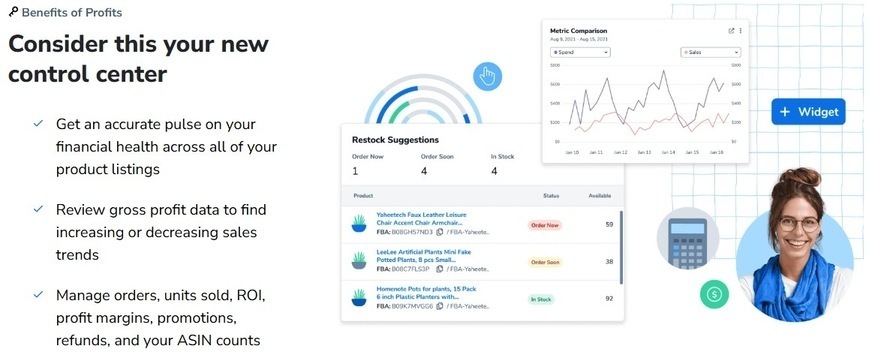
8. Profits: Track Your Success Metrics
Profits monitors your Amazon business performance automatically. You connect your Amazon Seller Account for real-time data.
The tool calculates actual profits after all Amazon fees. You see which niches generate the most money.
How Profits Helps
Track revenue trends across different product categories. Identify your most profitable keywords and niches.
Make data-driven decisions about inventory and expansion. You’ll optimize your business systematically.
Action Tip
Review your profit margins monthly and adjust pricing strategies. Focus marketing spend on your highest-performing keywords.
Example: Discover that your kitchen gadgets generate 40% higher profits than garden tools. You can shift more resources to kitchen products.
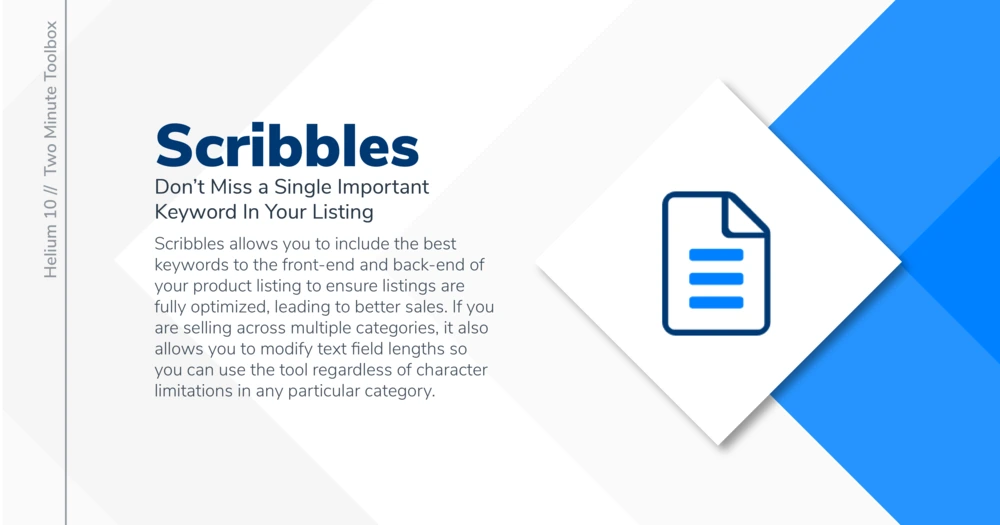
To Do: Your Helium 10 Niche Research Workflow
- Start with Black Box to discover profitable product opportunities.
- Use Cerebro to analyze successful competitors’ strategies.
- Expand your research with Magnet for comprehensive keyword coverage.
- Validate opportunities with Xray’s market analysis.
- Process your keywords through Frankenstein for organization.
- Optimize your listings with Scribbles guidance.
- Scale your success with Adtomic’s automated advertising.
- Monitor your success with Profits tracking.
Your Weekly Routine
Spend two hours researching new opportunities. Review competitor changes and market shifts. Update your keyword strategies based on performance data.
You’re never starting from scratch again. Each tool builds upon the previous research. Your niche and keyword research becomes systematic and profitable.
Summing Up Helium 10 Tools
- Black Box – a product research tool that filters Amazon listings based on criteria like revenue, reviews, and category.
- Cerebro – competitor keyword analysis, reverse ASIN keyword research tool.
- Magnet – keyword generation tool using seed keywords.
- Xray – a browser extension to analyze product data and market analysis.
- Frankenstein – a keyword processor to create keyword lists.
- Scribbles – a listing optimization tool to ensure keyword coverage.
- Profits – financial analytics tool to track sales, fees and profitability.
Wrapping Up – Can Helium 10 Find Profitable Niches?
Yes, Helium 10 absolutely can find profitable niches and keywords for your Amazon business.
These eight tools work together to reveal opportunities, analyze competition, and optimize your success. You have everything needed to discover profitable niches that align with your experience and interests.
It’s easy to feel overwhelmed by all the tools but you don’t need to know everything at once. Helium 10 offers you training and support so just start with one tool today and master that first. Every small step gets you closer to building your online business. Wishing you all the best, Alisa
Learn More
- Best Eco-Friendly Products to Sell on Amazon FBA for Beginners
- Can Helium 10 Find Profitable Niches?
- 10 Untapped Amazon FBA Niches that Solve Real Problems
- What is Amazon FBA? A Beginner’s Guide for Over 50s
- What Items Sell Best on Amazon FBA for Beginners?
- 5 Amazon FBA Tools for New Sellers Over 50 (to start earning)

